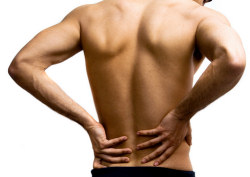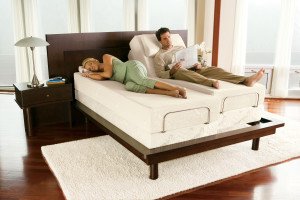At Gardner’s Mattress & More, we strive to custom fit each sleeper with the mattress that best suits their individual and unique sleep needs. The goal is better health through better sleep. However, we know how challenging this process can be for some people who suffer nightly with debilitating issues that affect sleep. We know we cannot help with the day to day treatment of these issues, but we sure can help you eliminate sleep disturbances by finding the best mattress for you. Below are some common issues that affect sleep and our “best bed for you” mattress recommendations.*
*Please keep in mind that we are not doctors and are not prescribing a mattress based on a particular condition. We are merely offering suggestions based on our customer (and personal) experiences.
Fibromyalgia
Fibromyalgia is a medical disorder characterized by chronic widespread pain and a heightened and painful response to pressure. If you suffer from Fibromyalgia, you already know this. Many people with Fibromyalgia also have a great deal of difficulty sleeping. We understand how crippling this can be for some people and while we can’t help you during waking hours, I’m pretty certain that we can help you find a better night’s sleep. In my experience, a person with Fibromyalgia is looking for joint pressure point relief. Especially one who sleeps on their side. My best recommendation is to sleep on something that is slightly softer on the surface, but offers proper support and spinal alignment throughout the body. Perfect beds at Gardner’s Mattress & More for sufferers of Fibromyalgia are the Tempur-Pedic Cloud beds (Cloud, Supreme, and Luxe), iComfort Revolution and Prodigy, Pure LatexBLISS Beautiful and World’s Best Bed, and Aireloom Gable and Sage Luxe. Add a power adjustable bed underneath the mattress that elevates your head and feet to customize your comfort and you’ll find even more pressure point relief!
Lower Back, Hip & Shoulder Pain
Back, hip, and shoulder pain are the most common issues we hear about from our customers affecting their sleep. It seems like nearly everyone we talk to has experienced some kind of discomfort during sleep in these areas of the body. While we realize that these pains have many sources (injuries, surgeries, general work and stress fatigues), but the mattress you sleep on should help reduce these pains, not add to them.
Out of all the pains in the body, back pain can be the most detrimental to sleep. And a worn out coil mattress that is sagging provides next-to-no support for a back that sorely needs it. To reduce back pain, a mattress needs to contour into the arch of your back, supporting you where you need it to, allowing the muscles of the lower back to relax. I firmly believe that any foam based mattress is typically better than any coil spring bed in its ability to properly cradle and contour to your back. A Tempur-Pedic, iComfort or Pure LatexBLISS mattress all have the ability to reduce back pain during sleep. However, simply replacing one flat mattress with another flat mattress may not completely solve the back pain issue. Sometimes, when people sleep flat on their back, there is a great deal of tension and stress on the lower part of the spine. If you ask a doctor about back pain and sleep, he or she may suggest putting a pillow under your legs. Why? To take the weight of your legs off the small of your back. If you’ve ever tried this, you know that it doesn’t work to well because pillows can shift through the night. The solution is a power adjustable bed base under your foam based mattress. A power adjustable base allows you total positional customization during the night to reduce pain and discomfort in the body. You are in control of your comfort as opposed to your pain being in control of your sleep. A slight elevation under the knees and head of the bed make a huge difference in how you sleep. I strongly recommend a power adjustable bed for any back pain sufferers and most premium mattresses work beautifully on them.
Often hip and shoulder pain are a result of a worn out mattress with coil springs pushing back against the body, creating harmful pressure points. A pressure point not only causes discomfort, but forces the body to change positions many times throughout the night. Tossing and turning in bed robs your body of the REM sleep it requires for proper joint and muscle rejuvenation. There are a wide range of mattresses that will reduce hip and shoulder pains, most of them containing layers of memory foam or latex in the top surface layers to reduce those pressure points. Any Tempur-Pedic, iComfort, Pure LatexBLISS or Aireloom will do the trick; the key is to find the one the best cradles and comforts your hips and shoulders.
I’ve grouped all of the below sleep issues into one conversation as the solution is often the same for each. As we discussed with back pain, sometimes switching from your current worn out mattress to another flat set doesn’t solve the sleep issue. The below issues are no exception. I don’t know a mattress in the world that will reduce snoring on its own. Most of these issues can be treated successfully by a doctor or health professional, but there’s not a mattress available that helps with reducing reflux or GERD issues. These following conditions occur, for the majority of people that suffer from them, when the body is in a flat position. The solution is a Power Adjustable Bed base.
Snoring / Breathing Difficulty
Elevating the head of an adjustable base to a 30 degree angle greatly reduces snoring as it relieves pressure on the diaphragm and keeps the airway open. It may also help keep your tongue from collapsing against the uvula. It is also recommended to elevate the legs slightly to reduce the stress on the base of the spine. This has less to do with snoring and more with getting the most out of your adjustable base!
Sleep Apnea
Treatment of sleep apnea should be sought from a sleep disorder specialist or doctor. Many people who suffer from sleep apnea with a CPAP mask or similar device. Adjustable beds don’t reduce the effects of sleep apnea. However, I have had customers who also use a CPAP mask find that it is much easier to find a comfortable, elevated sleep position with an adjustable bed as opposed to lying in a flat position.
Acid Reflux / GERD / Hiatal Hernia
Like snoring, elevating the head of the mattress with a power adjustable base will likely reduce the effects of reflux, GERD, and Hiatal Hernia. The idea is to elevate the head of the bed, keeping the stomach below the esophagus. Sometimes a slight elevation is all that is necessary, but severe reflux or GERD may require a much steeper angle, perhaps 6 to 8 inches of elevation. Often, these issues can be reduced by changing your diet and not eating so close to bedtime and medication, but an adjustment in position will help greatly.
Restless Legs Syndrome / Sciatica / Circulation Trouble
Using a power adjustable bed base to elevate the knees to take the weight of the legs off of your hips and lower back will reduce the effects of both Restless Legs and Sciatica issues. Sometimes a steeper angle may be necessary, but any leg elevation should be enough to stop the “Jimmy Legs” (fellow Seinfeld fans may be smiling). Similarly, circulation will improve by elevating your legs above the level of your heart.
My sleep issues and how I solved them:
At the time of this writing, I am 33 years old. Based on my age, you wouldn’t suspect that I am a candidate for a power adjustable bed base. After all, I don’t fit the “elderly” or “infirmed” adjustable bed stereotypes. But dig a little deeper and you’ll find that I am a sleeper that suffers when I lie flat. I don’t snore, but due to allergy issues, I tend to get congested and have difficulty breathing. I used to use the Breathe Right strips to help breathe. Now I simply elevate the head of the bed. It makes a huge difference. I also suffer a bit with reflux. It’s not chronic, but I’ll admit, I work late some nights, eat a late dinner and crawl into bed soon after. By the middle of the night, if the bed isn’t elevated, I’m reaching for the TUMS. Fortunately, my adjustable base is my reflux salvation. I am also your classic Restless Legs sufferer. I used to drive my wife crazy when I shook the bed with my legs moving. Now, I can elevate my legs where the urge to shake just isn’t there. I guess what I’m trying to say is that there is no limitation on who an adjustable bed is for. We understand that for some people, an adjustable bed is a luxury, but for most, it’s a downright necessity. Stop in to Gardner’s to see how a power adjustable bed base can help solve your unique sleep issues too.






